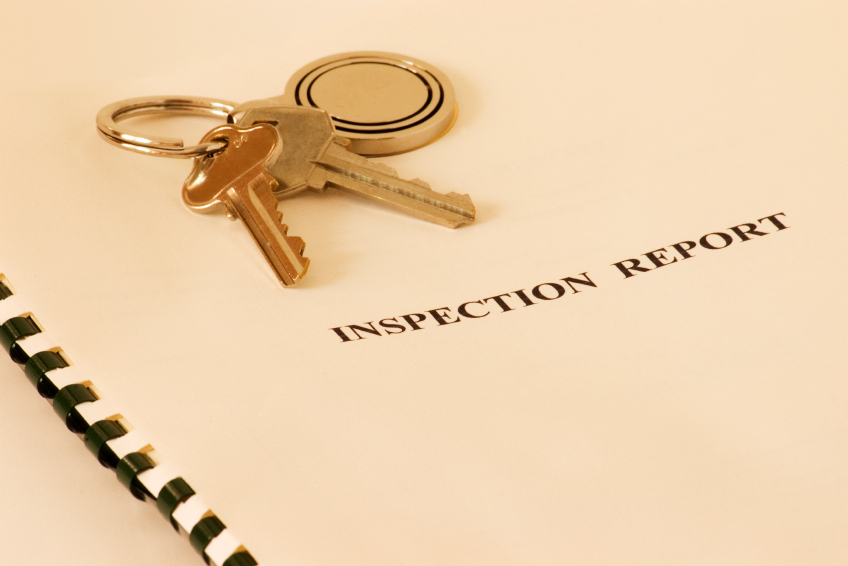This article is an external press release originally published on the Landlord News website, which has now been migrated to the Just Landlords blog.

If you’re thinking of becoming an independent inventory clerk, then you must be aware of what it takes. The Association of Independent Inventory Clerks (AIIC) has spoken to its members to find out…
Being an inventory clerk goes beyond writing an impartial and detailed report; it’s about customer service, ingenuity, safety and good dose of tactfulness, according to the AIIC’s Chairman and the Managing Director of My Property Inventories, Danny Zane.
Landlords, letting agents and tenants all know that the role of an inventory clerk is to note meter readings, the condition of a property (including its walls, fixtures, fittings and furniture), whether fire safety labels on soft furnishings are present, and whether smoke and carbon monoxide alarms are in working order.
So, if you were an inventory clerk, what would you be keeping in your bag?
“I just thought about the stuff I keep in the car: replacement batteries, charging cable for my phone, a change of top and leggings, a small towel, dry shampoo and a hair brush, amongst other things,” says one AIIC member. “I could tell you the story of the fridge that meant I was very glad to have a change of clothes. And what to say of the house where the tenant left the heating on so high that, in the end, I had to reach for the towel and dry shampoo!”
Another adds: “One of our clients asked us to carry a ladder to every job in order to twist non-working light bulbs to see if they are just loose or actually blown. They also asked us if we were prepared to change the batteries of the smoke alarms whilst on the job, so we now carry spare batteries, too!”

Properties vary in size and style, depending on the area. In some locations, buildings are more traditional, with very high ceilings and double-height stairwells. This may complicate the job of inventory clerks, who are instructed to read and note the expiry dates on smoke alarms from a sticker, which is usually on the side of the device.
Where using a ladder may not be possible, or may be deemed too risky for health and safety reasons, and insurance cover purposes, the selfie stick is invaluable – especially in unfurnished properties, where there is nothing to stand on to gain height.
“On a few occasions, alarms are situated more than four metres high, making it impossible to reach them, even with an extended pointer,” explains one member. “I say as much in my report, and add a photograph for the landlord and agent to see.”
Photographs may, however, not always show the issues that inventory clerks are reporting on, as it is difficult to show damage unless it is a major problem. When photos are used in a dispute, they must be high resolution and of a reasonable size.
Short days during the winter make the task especially troublesome, so landlords and agents should book inventory reports to be completed in daylight, for the best results.
On a positive note, photos are normally only used to back up what has been reported.
A member of the AIIC jokes: “My very best was a retro-fitted water meter under a sink. Fitted upside down, facing the back of the cupboard! I took a picture of the back of it and recommended the landlord use his spidey senses to read it.”
The good news is that there is no legal requirement to include photos in an inventory report, but AIIC members like to include them as supportive evidence. To be able to cover everything, one clerk took 346 photos of a two-bedroom furnished property, with five rooms, plus a hallway.
Meter readings are an important part of the inventory. They help new tenants and landlords of empty properties to confidently deal with discrepancies reported by utility suppliers.
However, they can be troublesome for some clerks: “I have my arachnophobia (the real thing, diagnosed and everything) under control-ish! But OMG, I hate openingwater meter covers. Gas and electricity boxes are bad enough! There is always at least one web-with-resident at the top, more below! The landlords I work for think it is funny. Landlords just look at me as though I have lost my mind (to be fair, they are probably right) and I do find it a bit daft myself.”
Another continues: “I find the only way to take a picture of a water meter is to lean completely over it, blocking the sun, then drop my arm into the recess and let the auto focus do the rest. This provided that the water meter is not covered by a HUGE ants’ nest, water, rubbish or, typically, by a car parked over it.”
The relevant water company maintains water meters on public areas, such as footpaths and highways. Inventory clerks attempting to read meters located in the pavements are responsible for any damage that they may cause to the meter itself, or injury that they may cause to other people in the process of reading the meters.
Zane observes that, when AIIC members cannot read a water meter, but can locate it, they are always advised to take a photo, so that their landlord or agent can clearly see why. Clerks should also ask their instructing principle for the exact location and the meter reference number at the time of booking. This will enable them to identify the right meter where no flat labels are applied, especially in blocks of flats.
It is surprising how many tenants go ahead with changes to their property without their landlord’s consent, even when a tenancy agreement carries a clause that the landlord’s consent must not be withheld unnecessarily.
Zane says: “The fact is, whether rented or owned, a property is a home. It is therefore understandable that tenants have a sense of ownership towards the property they live in. In reality, it is a false sense of ownership, which may cost them, and the landlord, dearly.”
However, there are times when inventory clerks must find a neutral ground that is both tactful and respectful.
An AIIC member recalls: “I have just completed a check-out where the tenants had been living for six years. They had a pet dog, which died during the tenancy, and they buried in the back garden with a small concrete marker stone with the pet’s name anddates etc. I left it as was and just commented at the end of the report that the grave was present.”
After hearing the accounts of these inventory clerks, do you believe that you have what it takes to enter the industry? Let us know!




